Honey: A Natural Elixir for Beauty, Health, and Wellness

Honey comes in many varieties, and flavors, and has many uses. This golden liquid, a treasured gift from nature is more than just a sweetener. It plays a big role in beauty practices and home remedies. But not all is the same. Most varieties of these also impart a flavor specific to the flower. Acacia honey is sweet, while buckwheat honey carries a punch. Each variety has its distinct taste, color, and quality. From cooking to skincare to medicinal benefits, the versatility of honey never goes out of style.
This article explains how pollen helps determine honey’s purity. It also explains how examining dust counts can guide buyers about what to avoid when purchasing this beloved golden liquid. We will explore 20 endless varieties, rich flavors, countless uses, stunning beauty, health perks, and more.
Varieties and Categories
Honey comes in various forms and groups, each with its traits and tastes. Let’s look at some of the most common types, their origins, uses, health perks, and who might benefit from eating them.
1. Manuka honey comes from the nectar of the Manuka bush found in New Zealand and Australia. It is well-known for its special healing abilities. You can eat it raw, put it on wounds, or mix it into smoothies or oatmeal. This golden elixir contains Methylglyoxal (MGO), which gives it powerful antibacterial properties. It helps wounds heal and relieve sore throats. It’s good for gut health and boosts immunity.
It calms the digestive system, eases symptoms of irritable bowel syndrome (IBS) or heartburn, can help with stomach ulcers, and strengthens the immune system.
2—Clover honey is harvested from honey bees that feed on clover blossoms in the United States, Canada, and New Zealand. It has a light texture, a mild taste, and high nutritional value. People often use clover honey to sweeten foods, soothe sore throats, and restore health. Perfect to add sweetness to drinks, bake with, or enhance the taste of pancakes and yogurt.
Its antioxidants help protect the heart. It also seems to diminish the duration and intensity of coughs. This all-purpose honey is safe for kids over one year old, who can use it as a natural cough remedy. It’s also great for anyone who wants to add to their diet without a strong taste. Its subtle flavor suits many kitchen uses.
3- Acacia honey comes from the flowers of the black locust tree, which grows in Europe and North America. This is rich in antioxidants and less likely to crystallize, so it’s great to store for extended periods. It helps control blood sugar levels because of its low glycemic index. Enhances liver health and its detoxification processes. It supports mild taste which is ideal for people sensitive to strong flavored foods. Should be consumed in smaller amounts for people suffering from diabetes. Anyone looking for a light and floral-taste will enjoy this.
4- Buckwheat Honey- This honey originates from the United States, Canada, and Eastern Europe as it comes from the nectar of Buckwheat blossom which mainly grows in these places. Useful in baking and cooking. Beneficial for the cardiovascular system. Helps relieve sore throat and cough symptoms. The darker the color and richer the taste, the more nutritious it is. Great for athletes or anyone looking for energy in the foods they consume and those with frequent colds or respiratory diseases.
5- Eucalyptus Honey is sourced From the nectar of Eucalyptus trees, primarily in freshwater lakes and low-lying areas of Australia, Spain, and Portugal. Great for herbal tea, home remedy for cough, or application to minor burns. The antibacterial and anti-inflammatory agent helps with respiratory diseases. Strengthens immunity; aids digestion. Any individuals with lung issues and those who are seeking natural antibiotic alternatives for bacterial infections can consume it.
6—Wildflower Honey is procured from the nectar of various types of wildflowers that are typically local to a given region. It is versatile, and it can be used in teas, spreads, or salad dressings. It is high in antioxidants and enzymes. This aids in alleviating hay fever and allows the body to heal more effectively. Local wildflower honey is best for those with mild seasonal allergies and who are in search of an all-purpose honey.
7- Tualang Honey is harvested from the Tualang tree in Malaysia by rock bees. It can be used raw or mixed with warm water. Avoid high heat to retain nutrients. It is abundant in antioxidants and antibacterial properties. Tualang Honey reduces menopausal symptoms, supports skin health, and promotes wound healing.
8—Lavender Honey originates from the nectar of lavender flowers in France and Spain. It is used in desserts, teas, or as a natural sleep aid. It calms anxiety and promotes relaxation. It also has anti-inflammatory and antimicrobial properties and helps with digestive problems. People struggling with insomnia or stress or those with minor digestive problems should consume it.
9—Orange Blossom Honey is gathered from large citrus orchards of orange trees, which are commonly found in regions like Florida, California (USA), Spain, and Mexico. This delicate fruity-flavored honey is a natural mood and immunity booster and is perfect in desserts and teas.
Adults, children, and elderly individuals (except infants) can consume it. This light fruity taste syrup promotes relaxation and relieves stress and anxiety and helps fight oxidative stress. It supports digestive health and provides natural antibacterial properties.
10- Alfalfa Honey is extracted from Alfalfa flowers, primarily found in the USA and Canada. Perfect for athletes, diabetics, and others as a natural sweetener. It has a mild sweet flavour which is excellent for teas and baked dishes. Contains amino acids and enzymes that support digestion. Rich in antioxidants, it helps reduce inflammation and supports immune and skin health.
11- Heather Honey is primarily derived from Heather flowers, mainly in Scotland, the UK, and Spain. Beneficial for respiratory disease and natural joint and muscle support. Packed with phenolic acids and antioxidants that promote good heart health. Its anti-inflammatory properties relieve arthritic and joint pain. Boosts energy levels and is a curative aid for digestive and gut health.
12—Tupelo Honey originated from white Ogeechee Tupelo trees found in Florida and Georgia (USA). It is ideal for people who keep a close watch on their blood sugar levels and crave a healthier alternative to satisfy their sugar cravings. Tupelo honey lasts long as it doesn’t crystallize easily.
Moderate amounts can be ingested by a diabetic because this treasured gift of nature exhibits a high fructose profile. It provides sustained energy boosts to the body without blood sugar spikes and also supports the health of the liver and detoxification.
13- Sage Honey – is commonly found in California (USA) and Mediterranean regions. Suitable for people seeking respiratory relief and for singers and people who speak publicly as it serves to soothe the throat. Aids digestion and provides gut health. Governs brain function and mental clarity. Provides skin hydration and thus acts as a natural moisturizer.
14- Lavender Honey – This naturally calming, sleep and relaxation-enhancing honey is derived from the Lavender fields in France, Spain, and Italy. Ideal for people dealing with stress, anxiety, and insomnia.
Good for natural relaxation and skin benefits like skin healing, burns, and acne. Reduces inflammation and supports a healthy immune system.
Offers antibacterial properties – useful in wound healing.
15- Sidr Honey is one of the most medicinal honeys, used for healing infections and wounds. Obtained From the Sidr tree (Lote tree), primarily present in Yemen, Saudi Arabia, and Pakistan. Useful for people suffering from chronic illnesses and weakened immunity. Increase stamina, helps fight off bacterial and viral infections, and provides relief from gastric ulcers.
16- Pine Honey (Coniferous Honey) Harvested in Greece, Turkey, and Mediterranean forests has a resinous taste and is valued for its strong antibacterial and antioxidant activity that slows the aging process. Recommended for those having some respiratory issues or coughs. This type contains a high amount of minerals (calcium, magnesium, potassium) and acts as a powerful antimicrobial, to fight infections.
17- Neem Honey comes from: Neem tree flowers, which grow in India and Southeast Asia. People with stomach troubles, skin issues, and diabetes can consume it. Neem honey helps control blood sugar, heals wounds, cleans the liver, and helps digestion. It makes the immune system stronger.
18- Rosemary Honey– is accumulated from Rosemary flowers, grown in Spain, France, and around the Mediterranean. Good for people who feel bloated or have indigestion. Has lots of antioxidants, which are good for overall health. Helps the liver work better and clean out toxins. Improves the memory.
19-Jamun Honey (Indian Blackberry Honey) is emanated from Jamun (Indian blackberry) trees in India and Southeast Asia. Diabetics will find this type good because it helps control blood sugar.
People with stomach or skin problems can also benefit from it. Jamun honey is a blood purifier and it keeps the gut healthy. Excellent for skin health as it clears up acne.
20- Avocado Honey – arrives from Avocado tree flowers found in Mexico, Central America, and parts of California (USA). Great for athletes and people who need a natural energy lift. Good for people with low iron and anemia. Full of antioxidants, which support a healthy immune system and heart. Aids in keeping blood sugar steady. Gives a strong rich taste perfect for baking and cooking.
Expanding the Honey Horizon:
In addition to the 20 widely recognized varieties, there is an interesting range of lesser-known honey, each with its own flavor and health benefits. Let’s explore some of these equally remarkable, golden nectar:
Dandelion Honey: Produced from dandelion nectar in North America and Europe, this golden, slightly tangy liquid is highly nutritious and commonly employed for detox.
Fireweed Honey: Harvested in the northern United States, Canada, and Europe, this light, delicate elixir is a source of antioxidants and a sought-after treat among sophisticated honey connoisseurs.
Rapeseed Honey: Common in Europe, this pale, creamy hive product crystallizes quickly and contains a high percentage of glucose.
Cotton Honey: Made in cotton-producing areas such as the southern United States, this sweet, mild Bee’s nectar is a good all-around choice for baking and general use.
Sourwood Honey: Extracted from sourwood tree nectar, this type possesses a spicy, complex taste with anise undertones, making it popular among Nectar aficionados.
Sunflower Honey: This light amber sweetener, is made from sunflower flowers, and has a mild, nutty taste ideal for sweetening tea and adding to baked goods.
Chestnut Honey: With its dark color and strong, slightly bitter flavor, chestnut honey is full of minerals and antioxidants and is best paired with strong cheeses and desserts.
Leatherwood Honey: Made from the Leatherwood trees of Tasmania, Australia, this honey is excellent as a spread on toast or a mix with tea. It has a distinctive flower flavor with antimicrobial properties and is high in minerals for bone health.
Honeydew or Black Forest Honey, is produced from the honeydew of insects that live on trees, so it has a dark, intense flavor.
Ulmo honey, from Chile, has a vanilla-like scent.
Royal Jelly Honey is a combination of honey and royal jelly, a product excreted by bees for queens.
Significance of Pollen Counts
Pollen counts are important when it comes to honey’s benefits, particularly for allergy sufferers. Here’s why:
Local Honey and Allergies: Local honey has pollen from the local environment. Eating small quantities of local products can desensitize people to local allergens, possibly alleviating allergy symptoms over time. However this is not scientifically established for all allergies, and medical guidance should be taken.
Honey Authenticity: The floral source is established through pollen analysis, and this ensures its authenticity and confirms its stated origin.
Nutritional Profile: Pollen adds vitamins, minerals, and antioxidants to honey’s nutritional profile. Various floral sources provide different pollen quantities, which affect the composition.
Environmental Monitoring: Pollen counts may be used as a marker for environmental health and biodiversity. They indicate what kind of plants are flowering in a given area and give us clues about the local ecosystems.
Quality Control: Excessive pollen counts may also suggest a good quality honey, which was not over-processed.
Honey’s Multi-Aspect Advantages:
Apart from their distinctive tastes, this golden liquid is highly valued for its broad range of culinary and medicinal uses.
Culinary Applications:
Honey provides sweetness and richness to foods, hence a valuable ingredient in baking, cooking, marinades, and salad dressings. It is a wonderful yogurt, pancake, and toast topping.
Medicinal and Health Uses:
Antioxidants: Honey’s antioxidant content assists in fighting free radicals, ensuring cellular well-being, and reducing aging.
Antibacterial and Antifungal Activities: Honey has been utilized for centuries to heal wounds and infections due to its natural antimicrobial activities.
Soothes Coughs and Sore Throats: Honey’s gentle texture and antibacterial properties ensure that it is an effective treatment for coughs and sore throats.
Increases Energy: Honey’s natural sugars give a rapid and long-lasting energy boost.
Aids Digestive Health: Honey can help aid digestion and soothe digestive upset.
Skin and Hair Care:
Skin Health: Honey’s moisturizing and antibacterial properties ensure that it is used extensively in cosmetic products.
Hair Care:
This natural sweetener encourages shine, moisture retention, and scalp health, making it an ideal addition to hair masks and treatments. It’s a big “YES” for hair care.
Honey as a Tool in Your Weight Loss Journey
Although it is a natural sweetener with health benefits, it’s also important to realize how it fits in with losing weight. It’s not a magic pill, but it can be an effective weapon if used properly.
The Rare and Premium Quality Honey in the World:
One of the world’s most sought-after treasures is Malaysia’s Tualang. Gathered from the tall Tualang tree, this rare and highly valued honey is revered for its intricate taste and potential medicinal benefits. It’s a high-end option for those looking for a nectar that’s full of antioxidants, which is said to promote general health, calm allergic conditions, and improve the skin. Perfect for aficionados who relish the strong taste and the possible health benefits of this rare hive product In addition to other top brands such as Manuka, Acacia, Sidr, and Neem, Tualang honey provides an undeniably unique experience for discerning honey lovers.
Conclusion
By learning about the multifaceted world of honey and the importance of pollen counts, you can truly see the incredible impact that this natural elixir has on beauty, health, and wellness.
Disclaimer
This article is for informational purposes only. Always consult with a healthcare professional before using honey as a treatment for health-related issues, especially if you have underlying medical conditions or allergies.
We’d Love to Hear From You!
Have you tried any of these varieties? What’s your favorite way to use honey for beauty or health? Let us know in the comments below!























